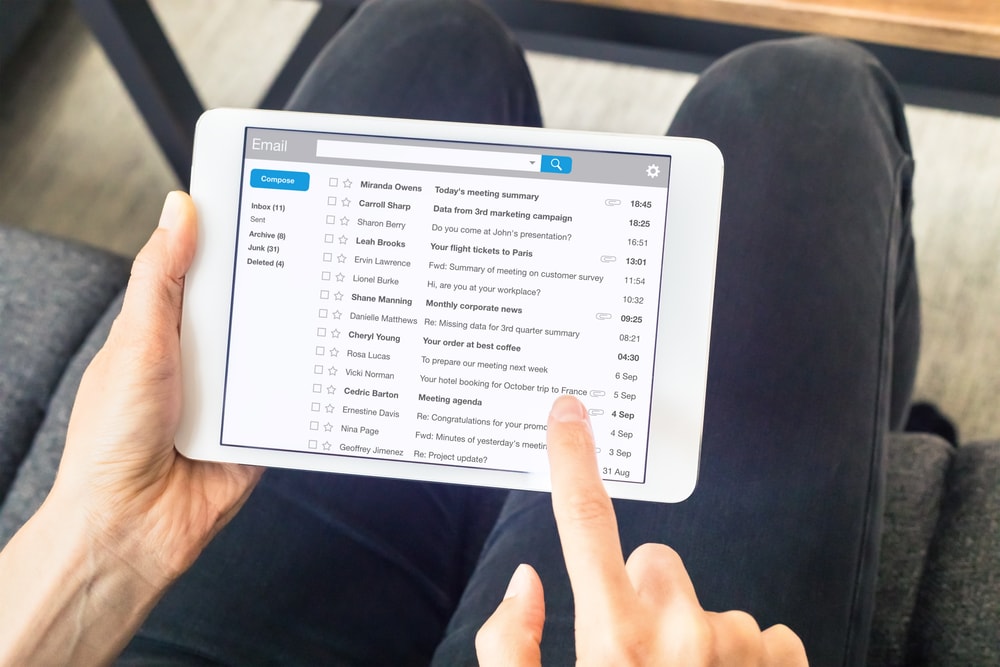Content may be king, but it can also be a taxing experience for creators. It takes, on average, around 3.5 hours to write a blog post and even longer to produce a few minutes of well-edited footage.
All a worthy investment, of course, if it leads to more traffic, leads and sales.
But like any good investment, you need to maximize how far it goes if you want the best returns. That means squeezing out every drop of value that content offers to ensure you get your time and money's worth. So how do you do this? By repurposing it.
Repurposing content is a smart way to get more mileage out of your work. Not only does it reinvigorate forgotten content, but it also exposes it to new audiences who would have otherwise never laid eyes on it.
Of course, repurposing doesn't mean copying and pasting previous content into new mediums. You do still have to put some work into the process. But it can give you a great head start. Here we'll
- explain the benefits of repurposing content,
- help you learn how to identify what is repurposable, and
- show you some of the ways you can go about repurposing content.
Benefits of Repurposing Content

As well as saving you time, recycling content brings several benefits, including:
- Improving SEO. Repurposing content provides multiple opportunities to target a desired topic or keyword as well as opportunities to create quality links between the different platforms and sites you use, enhancing your search presence.
- Maintaining publishing frequency. Repurposing means you can continue creating high-quality content across numerous channels without the stress of extra work. Content frequency is a key trust signal for website audiences.
- Reaching new audiences. Viewers have preferences regarding the type of content they consume and where they consume it. Therefore, you can get your content in front of new audiences by reformatting content for different mediums across multiple platforms.
- Ensuring great content doesn't get forgotten. Finding and repurposing old content is like finding forgotten antiques in your attic. The content's value hasn't gone anywhere. It just needs a little dusting off, and it's as good as new and valuable as ever.
Choosing Content Worthy of Being Repurposed
You'll want to consider two aspects when choosing content fit for repurposing:
- Whether the content is evergreen, and
- Whether the content is popular enough.
Evergreen content is content that stays valuable for a very long time. It's neither time-sensitive nor dependent on current trends, making recycling a viable choice since it is likely to be still relevant to your audience.
Also, generally speaking, you'll want to focus your efforts on repurposing content that proved popular the first time around. Otherwise, it might not be worth the hassle.
9 Bright Ideas for Repurposing Content

1. Turn a Blog Post into a Social Media Thread
You'll always need more social media content, so it makes sense to take advantage of what you've already got. For example, you could take the subheadings of a blog post and add a little context to each using images to help make it visually appealing and eye-catching. Or you could take one subheading and expand it into a full LinkedIn post. Also, powerful quotes, points, or statistics can make great standalone points on a social media feed.
As you can see then, just one blog post could potentially give you enough content for a whole week. And, while we're on the subject of social media, don't forget to reshare old social media posts that are still relevant to your audience.
2. Create Video Scripts From Written Content

Video marketing is a great marketing channel for fostering engagement with your audience. But, despite how it may look, few people can get in front of a camera and produce great content on the fly. So instead, you'll likely need to write a script first, even if it's just a high-level one.
Thankfully though, any written content you've created before, be it a blog post, article, or LinkedIn post, can be used to form the basis of such a script.
Using articles and videos in tandem is often a brilliant idea since the two forms complement each other nicely. For example, when creating videos on YouTube, you can add a link to the corresponding article on your site. Similarly, you can embed topic-relevant videos into your written content. Doing so means your audience can easily find their preferred method of engaging with your content.
3. Convert a Listicle Into Several Individual Pieces of Content

Listicles are fantastic for summarizing larger concepts or swaths of information into bite-sized chunks. But the nature of such articles requires points to be relatively brief. After all, you can hardly write thousands of words under each point you make in a top 10 list. Otherwise, the article would be massive.
As such, they often leave plenty of room for further detail elsewhere. So, there's no reason you can't create blog posts, multimedia stories, or social media content for each point made in a previous listicle.
Of course, you could go the opposite way with this tactic. For instance, if you've made several posts about similar topics in the past, you can summarise them in a listicle. In either case, you can then use the listicles as a kind of pillar page by including plenty of links to the related content.
4. Turn Content Into a Quora Answer
.jpg?width=1000&name=Webp.net-compress-image%20(3).jpg)
Quora is a social questions and answers site that many brands often overlook. While it isn't as big as the social media giants like Twitter and Facebook, thought leadership on Quora is still popular and can help you generate more traffic and build your authority. The site also makes it incredibly easy for you to repurpose older pieces of content into answers, so there's no reason not to give it a shot.
Again, you could try the opposite here and make blog posts and the like from Quora answers. In fact, Quora is an excellent way of finding out what kind of questions your audience is asking. So, you could view using it as a form of market research that you can base your content creation strategy around.
5. Consolidate Your Work on a Topic Into an ebook

If you've been creating and marketing for some time, you've probably written a whole book's worth without realizing you have. But have you considered actually making a book from that content? While you'll want to supplement such a project with additional research, info, and photos, there's no reason you can't use your original content as the basis for an ebook.
Once you've created your ebook, you can use it in several ways. For example, you could use it as a giveaway, present it as gated content (free content in exchange for personal information such as an email address), or as an additional income stream.
6. Create Audio Content

While some people prefer to read or watch content, others like listening better, and you should look into providing them with that option. What's excellent about audio content is that people can tune into it anywhere, even while performing other activities.
So, repurposing written content into audio is absolutely a worthy investment of time, especially if you've got older content you can use as a basis. As well as audio files, you can also look into creating a podcast and using previous content you've made as topic pieces.
7. Turn Longer Videos or Articles Into an Email Series

Even your most engaged and loyal readers are unlikely to trawl through the entirety of your site's blog feed, and many people struggle to find the time to watch exceptionally long videos. An email series solves this problem by offering information in bite-size chunks.
You could, for instance, turn a seven-point listicle into a week-long guide, or you could break down the main points you made in a recent video. However you choose to go about it, an email series can greatly incentivize customers to join your email list, which is always a plus.
8. Create Infographics From Reports
Infographics are great for summarizing large chunks of information in a bright and visually appealing manner. Such is especially true when there's a lot of data involved. But you don't have to be a pro when it comes to graphic design to get in on the action. Plenty of programs and apps allow non-designers to easily put together their own infographics.
Infographics are a highly sharable medium, especially on social media and image-based sites like Pinterest. So, if you have any content that deals with data, be it a report or bylined article, turning it into an infographic is a no-brainer.
9. Turn Webinars Into Video Tutorials

Webinars are a great way to share your expertise and start a discussion. But, of course, not everyone can be there when it happens. So, if you've hosted a fantastic webinar, don't let it go to waste!
Either record the event, save any slides used or recreate the lecture and turn it into video content for YouTube or your site. Just keep it interesting; we're all familiar with webinar fatigue these days.
The Number 1 Rule of Repurposing Content: Always Add Value
Repurposing content can save vast amounts of time, but that doesn't mean it doesn't require work on your part. Instead, every time you recycle any form of content, you should always be looking to add value for the user. That might mean adding new information, a different perspective, or simply making the content more user-friendly.

 8 min read
8 min read





 5 min read
5 min read

